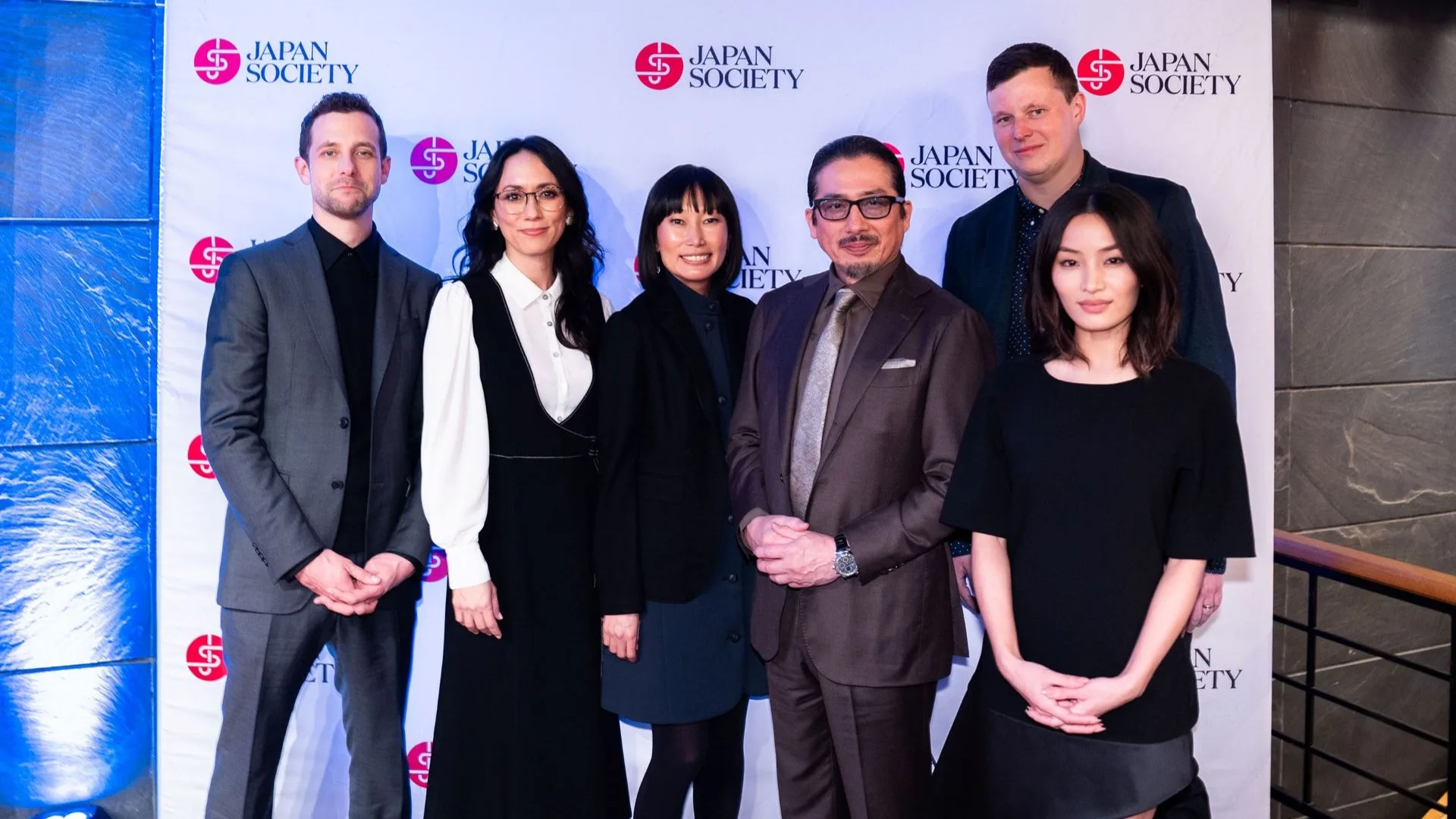President’s Letter



President’s Letter
Spring 2024
日本語はこちら (Japanese)
日本語はこちら (Japanese)
← Return
Dear Friends and Supporters,
I’ve always loved cherry blossoms, the eternal symbol of spring and hope, which capture the quintessential essence of what it means to be Japanese. They’re ephemeral, they can be pink, they can be white, the color doesn’t matter. What matters is their unique beauty—whether it’s a display of blossoms in New York City from the Hudson River to Central Park, or the late-flowering trees in Hokkaido, where I grew up, or the ubiquitous cherry trees of Washington celebrated in the National Cherry Blossom Festival.
A new season of hope is my wish for U.S.-Japan relations after this particularly dark and cold winter. It’s not only because of what’s going on in the world, but also because I think that there’s a light at the end of this tunnel. I don’t necessarily believe that the wars in Ukraine and Israel are going to be over. But there is hope that goes beyond the geopolitical—the human connections and history of hope between the U.S. and Japan and the symbolism that is there. I often think about the symbolism of Japan—it’s so much deeper than a single flower. In this new season, Japan’s relationship with the U.S. has never been more vital both politically and culturally.
The political season
It’s important to note that the American presidential and electoral system are very different than in Japan, despite sharing “democracy” and sensational media headlines. Here, you can take a snapshot of each moment leading to the presidential election in the U.S., but it doesn’t really matter until you get to November. Many other things could happen, not least of which might be health concerns when you’re dealing with individuals of that age. It’s also about what’s taking place in the world at a given moment and what the U.S. President as the Commander in Chief means to the world. Want to know more? Highlights from my private briefing on the 2024 U.S. Presidential Election, produced for an audience of upper-level Corporate members on Feb. 26, are available here as an example of what I’m talking about.
Conversation with Ambassador Yamada
This all ties into a very fruitful conversation I just had with Ambassador Shigeo Yamada in Washington, DC—which I’m delighted to be able to share with you by video. Yamada-san is the new Japanese Ambassador, and it’s great to have someone like him in DC with nearly 40 years of public service in the Foreign Ministry who not only appreciates the policy community, but the people-to-people exchange and also the business investment that really makes the U.S. Japan relationship so strong. Ambassador Yamada’s first task, in many ways, is to prepare for Prime Minister Kishida’s first official state visit, the first in eight or nine years since Prime Minister Abe’s seminal visit and “Alliance of Hope” speech to a joint session of Congress.
After Biden’s own State of the Union last month, Kishida’s visit will be interesting not just for what he says but the subtext that often defines these visits. I’m not as optimistic about whether Kishida will have the same impact as Abe because it’s a different moment in time. Abe’s whole focus was on our “Alliance of Hope,” in response to a president who was elected on a wave of hope. I don’t think that fits this moment any more. No matter what happens this fall, whether we’ll be electing or reelecting a president, I doubt it will be on a wave of hope.

Watch my full conversation with Ambassador Shigeo Yamada here.
When we think about what Japan can offer to the U.S. at this moment, it’s certainly about economic power. The revival of the Japanese economy is hotter than ever, and Japan has returned as an economic force in a way we haven’t seen since the 1980s. The Nikkei has hit an all-time high, surpassing the 1989 peak—but this time it’s not a bubble, it has been earned and the world is recognizing this. But undergirding that enormous economic power is Japanese society and Japan’s soft power, which is also a driver of the reviving economy. Japan’s soft power has truly flowered and is its true superpower. The question is, can this be effectively leveraged to transcend the economic and geopolitical during a time of such challenge in America and the world?
Shōgun and Zenga
The maturing of Japan’s soft power is a bit like FX’s new Shōgun series, based on James Clavell’s classic 1975 novel and the original TV series that made history on NBC in the 1980s. I think that what Shōgun now represents is a more equal footing from both a Japanese perspective and a Western experience and perspective on Japan, led by historical moments from Japan’s island nation period during the Tokugawa period. Japan Society had the honor of hosting a very special red carpet preview of Shōgun, a five-star media event with the cast and producers held exclusively for members and friends, with Nightline covering the launch from our own Japan House. What struck me the most was the level of authenticity and detail which spared no expense to tell this quintessentially East meets West story that many thought had already been told, but is resonating with an entirely new generation.
All this allows us to think about what we are doing here at Japan House and what Japan Society in New York can offer to the U.S.-Japan relationship more broadly. Our spring arts and culture season opens with None Whatsoever: Zen Paintings from the Gitter-Yelen Collection, exploring the origins of Zen Buddhism through the profound contributions of Buddhist painter-monks, in an exhibition of Zenga that is so appropriate for the cherry blossom season as we hope to clear our own minds and look within for inspiration.

© Ayumi Sakamoto
Japan Engagement
It’s been a while since I’ve been to Japan—in fact, this has been the longest time I’ve gone between trips since the pandemic. I’m eagerly anticipating traveling with our new Senior Gallery Director, Dr. Michele Bambling as well as our Chair, Merit Janow, for a special reception at the International House in Tokyo on May 20. The history of Japan House in many ways is intricately linked with our gallery, which was really the first permanent home for Japanese visual arts here in New York. I’m proud to say that the Japanese visual arts can now be found in all of the city’s top institutions, from The Metropolitan Museum of Art to MoMA—sharing some of the same legacies, whether through the Rockefeller family or many of the same donors. This will be the first time that I’m going to Japan with a gallery director and a partner to showcase what Japan House itself represents as beacon of Japan’s artistic and cultural appeal on the global stage of New York. I look at this trip as an opportunity to remind our friends about what we’re doing and to invite them to be a part of it at International House, which was also designed by Japan House architect Junzo Yoshimura and established by John D. Rockefeller 3rd.
As you know, we’ve opened Japan Society to Japan through our Japan Engagement Strategy during the past two years. You can read about it in our Annual Report and you can also see it on full display at our Annual Dinner, on both sides of the Pacific. On June 13, all the friends and supporters of the U.S.-Japan relationship will come together to celebrate the real future of our economies, which in many ways is tied to a very small but important product—semiconductors. The best of U.S.-Japan cooperation will be illuminated by our keynote speakers Atsuyoshi Koike, President & CEO of Rapidus Corporation and Arvind Krishna, IBM Chairman and CEO. We hope to build momentum for the years ahead, because the world, particularly U.S.-Japan, needs organizations like ours to shine the spotlight not only on where we’ve come from, but where we are going in the future. As we celebrate this spring season, let us hope our work collectively can inform, inspire, and transcend the challenges ahead in a unique U.S.-Japan way for the sake of beauty, brotherhood, and tranquility.

Joshua W. Walker, Ph.D.
President and CEO, Japan Society